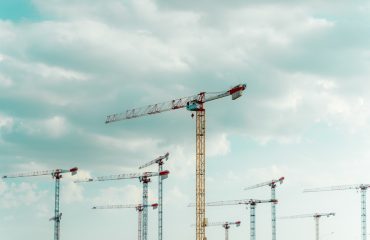body { font-family: sans-serif; line-height: 1.6; }
h1, h2, h3 { color: #333; }
h1 { font-size: 2.5em; }
h2 { font-size: 2em; }
h3 { font-size: 1.5em; }
The global steel market is a complex and dynamic entity, constantly fluctuating due to a myriad of interconnected factors. Understanding these factors is crucial for businesses involved in steel production, distribution, and consumption. This in-depth analysis delves into the current state of global steel prices, exploring the key drivers behind their volatility and offering insights into potential future trends.
Major Influencing Factors on Global Steel Prices
Several key factors contribute to the volatility of global steel prices. Firstly, raw material costs, particularly iron ore and coking coal, play a significant role. Fluctuations in the prices of these commodities directly impact the cost of steel production, leading to corresponding price adjustments. Secondly, global economic growth is a major driver. Strong economic growth in regions like Asia, particularly China, typically leads to increased demand for steel, pushing prices upward. Conversely, economic slowdowns or recessions can significantly depress demand and prices. Thirdly, government policies and regulations, including tariffs, quotas, and environmental regulations, can significantly influence both supply and demand. For example, carbon emission reduction targets are increasingly impacting steel production processes and costs. Fourthly, currency fluctuations can impact the price of steel in international markets. A stronger US dollar, for instance, can make steel imports more expensive for countries using other currencies. Finally, geopolitical events, such as wars or political instability, can disrupt supply chains and lead to price volatility. The ongoing war in Ukraine, for example, has significantly impacted the global steel market due to disruptions in raw material supplies and energy costs.
Regional Variations in Steel Prices
Steel prices are not uniform across the globe. Regional variations are influenced by several factors, including local demand, production capacity, import/export policies, and transportation costs. Asia, particularly China, remains a dominant player in the global steel market, with its vast production capacity influencing global prices. However, even within Asia, price variations exist between countries due to differences in demand and government policies. North America and Europe exhibit different price dynamics, often influenced by factors such as energy costs, environmental regulations, and trade relationships. Emerging markets in Africa and South America also play a role, though their influence on global prices is generally less pronounced compared to established industrial economies.
Analyzing Current Market Trends and Predictions
Currently, the global steel market is experiencing a period of relative uncertainty. While demand remains strong in some regions, concerns about global economic slowdown are tempering expectations. The ongoing impact of the war in Ukraine, coupled with persistent inflation and supply chain disruptions, continues to create volatility. Predictions for the future are mixed, with some analysts forecasting a modest increase in prices driven by continued infrastructure investment in certain regions, while others anticipate a softening of prices due to weakening global economic growth. The balance between supply and demand will ultimately determine the direction of steel prices in the coming months and years. Careful monitoring of key economic indicators, geopolitical events, and raw material costs is crucial for accurate forecasting.
The Impact of Sustainability on Steel Prices
The increasing focus on environmental sustainability is having a profound impact on the steel industry. The production of steel is a carbon-intensive process, and stricter environmental regulations are driving the adoption of cleaner production technologies. This transition to more sustainable steel production methods, such as the use of hydrogen-based processes, involves significant capital investment and can lead to increased production costs, potentially pushing up steel prices. However, the long-term benefits of reducing carbon emissions are likely to outweigh the short-term cost increases, and the demand for “green steel” is expected to grow significantly in the coming years. This shift towards sustainable production will likely reshape the global steel market, creating both opportunities and challenges for producers and consumers alike.
Strategies for Navigating Steel Price Volatility
For businesses involved in the steel industry, navigating the volatility of steel prices requires a strategic approach. This includes diversifying sourcing strategies to mitigate supply chain risks, employing hedging techniques to manage price fluctuations, and developing strong relationships with suppliers to secure favorable pricing terms. Investing in forecasting tools and market intelligence is crucial for anticipating price movements and making informed decisions. Furthermore, adopting flexible production processes and inventory management strategies can help businesses adapt to changing market conditions. Finally, understanding the impact of government policies and regulations is essential for long-term planning and risk management.
In conclusion, the global steel market is a complex ecosystem influenced by a multitude of factors. Understanding these factors and their interplay is crucial for navigating the inherent volatility of steel prices. By carefully monitoring market trends, adapting to changing conditions, and employing sound risk management strategies, businesses can effectively navigate this dynamic market and achieve sustainable success.




